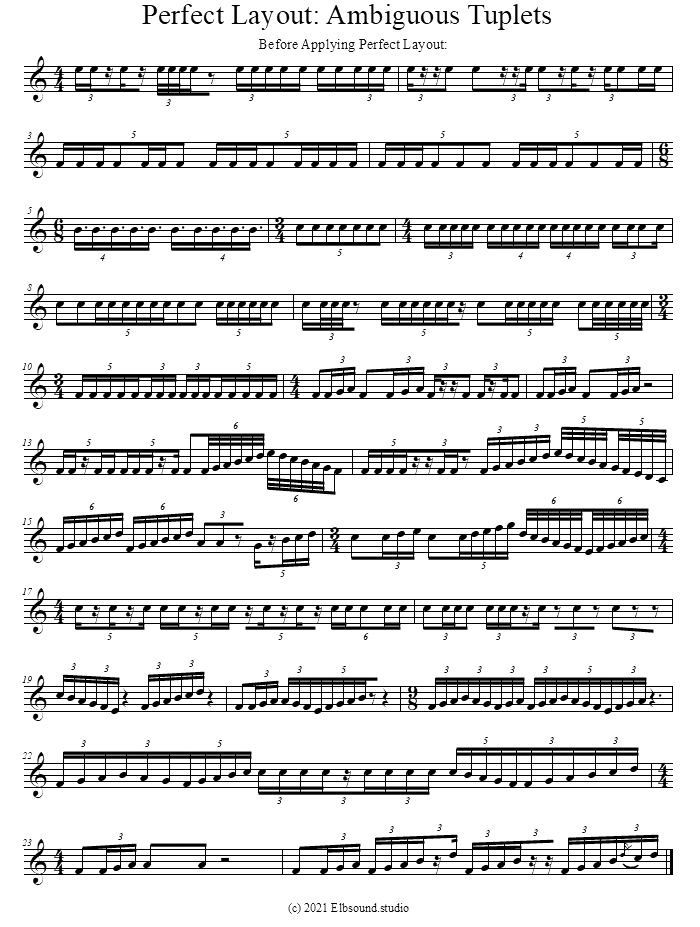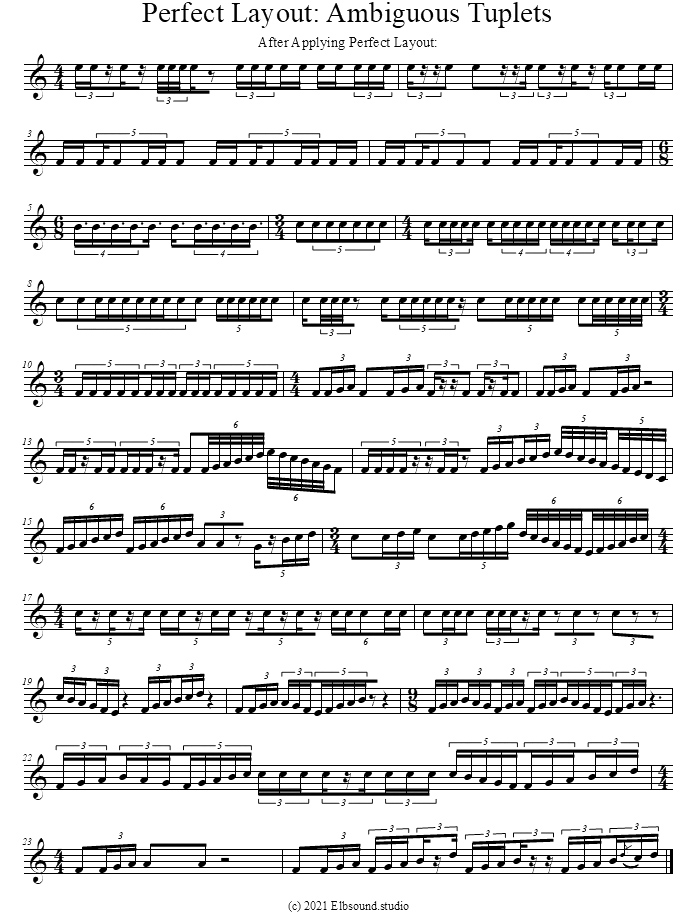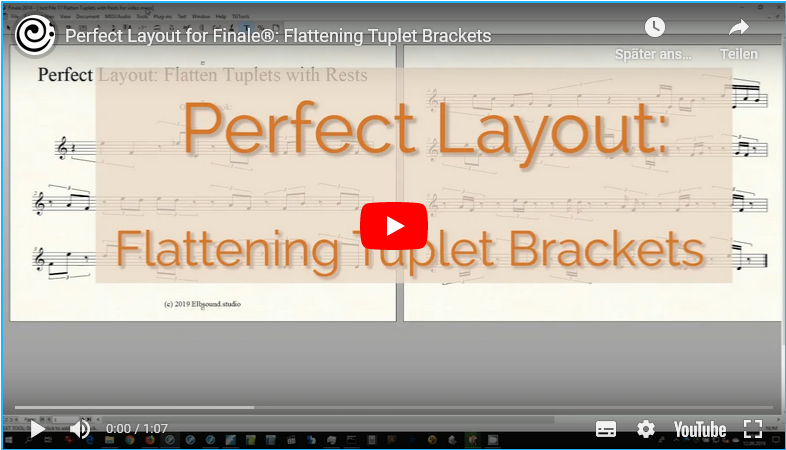The following before/after images give an overview of Perfect Layout's tuplet features.
The Finale documents of these tuplet examples can be downloaded from the
example page (Example 4).

Image 1: Before/After applying Perfect Layout

Image 3a: Tuplet brackets before applying Perfect Layout

Image 3b: Tuplet brackets added on ambiguous beamed notation with the default settings of Perfect Layout (v2.023)
Tuplet options in detail
"
Put Tuplet Brackets on Ambiguous Tuplets" adds tuplet brackets on beamed notes when the tuplet doesn't start on the first note of the beamed group and thus is difficult to read.

Image 4: Left: Original, Right: Added Brackets
Another tuplet feature which can't be unselected is automatic secondary beam break insertion as in image 5:

Image 5: Left: Original, Right: Added secondary beam break
"
Put Tuplet Brackets on Unsymmetrics Tuplets" adds tuplet brackets to unsymmetrics tuplets (i.e. if the duration of the notes is different from left to right than from right to left).
In these cases it might be difficult to decipher the reference duration of the tuplet.

Image 6: Left: Original, Right: Added brackets only to unsymmetric tuplet to not mix it up with a 16th note tuplet
"
Increase Tuplet Number If Max. Note Duration Is Shorter" changes the tuplet number for better readability if it doesn't match the note durations.
I.e. six 16th notes with a "3" tuplet number would be transformed into a "6".

Image 7: Left: A five 8th note tuplet with 16th notes becomes a ten 16th notes tuplet
For better readability tuplets on extreme low or high notes can get their brackets on the note side (instead of the stem side).
Check "
Put Tuplet Brackets on Notes Above Staff Position X on Top" for that feature. X is the minimum note position where this feature is activated:
1 means the first ledger line, 2 the space between the first and the second ledger line, 3 the second ledger line and so on.
By default this option is selected and affects notes on the second ledger line and above.
This feature always works on tuplets above and below the staff.
To switch off this feature, set the value to a very high value (e.g. 30 instead 3).

Image 8:
Left: Original, Right: Tuplets on extreme notes are put on the note side and get brackets (X=3)
For better readability Perfect Layout can simplify or even remove tuplets in case of duplets:
"
Remove Tuplet Symbols From Duplets" removes the tuplet bracket/number from duplets and converts the note durations (see measures 1 and 3 in image 9).
"
Simplify "Half" Duplets" removes one half of a tuplet if the remaining note would be "one half of a duplet" and the other half would be easier to read (see measures 4 and 5 in image 9).
Note: On the Silver edition of Perfect Layout these two options are available as one combined option only.

Image 9:
Top: Duplets before applying Perfect Layout
Bottom: After Perfect Layout m.1 and m.3 were converted through the
Remove Tuplet Symbols From Duplets option.
Measure 4 and 5 were converted through the
Simplify "Half" Duplets option.
Measure 2 has not been changed, because it wouldn't have been much easier to read without the tuplet symbols.
On tuplets that start or end with rests Finale often creates angular tuplet brackets which not always look so pleasing.
Perfect Layout offers several options to flatten these tuplet brackets:
a)
Keep as it is
b)
Flatten if Above Minimum Angle
c)
Flatten if Above Minimum Angle or All Outbound Tuplets
d)
Flatten All Tuplets that Start or End with Rests
The minimum angle is adjustable (6° by default).
Outbound tuplets means all tuplet brackets that have their highest offset over the starting or ending rest
All of these flattening options are showcased in this video:

Video: Flattening Tuplet Brackets








